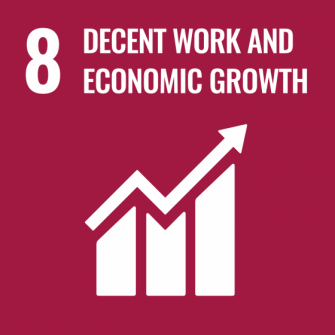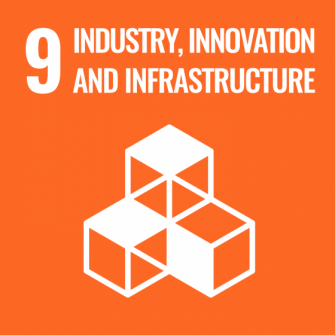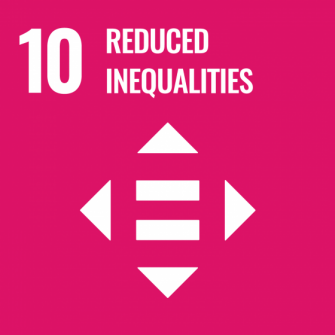SDG 7: Affordable & Clean Energy


All UNSW electricity is from renewable sources under a world-first 15-year solar Power Purchase Agreement (PPA).

We've achieved our target of net zero in scope 1 and 2 emissions every year since 2020.
Our work
Climate change and clean energy panel
This panel discussion on climate change and clean energy was run as part of UNSW's inaugural SDG Showcase in September 2024.
The SDG Showcase was a free, all-day event open to all the community that presented the amazing work UNSW is doing to progress the UN Sustainable Development Goals (SDGs) through transformative education, innovative research and partnerships with communities around the world.

UNSW Clean Energy Capability Portfolio
The Portfolio demonstrates how UNSW plays a critical role in working together with our local and international partners to address the most pressing global energy issues including reliability, affordability and sustainability through research. This includes outlining the research centres and facilities that focus on affordable and clean energy.
Tap into the largest and most diverse grouping of energy experts in Australia.
The centres and research groups that contribute to the UNSW Clean Energy Capability Portfolio include:
UNSW Digital Grid Futures Institute
The UNSW Digital Grid Futures Institute brings together UNSW's elite researchers and major partners across industry, government, research institutions and the community to advance the blueprint for future energy systems globally.
Tyree Energy Technologies Building
Real-Time Digital Simulation (RTDS) Laboratory
Particles and Catalysis Research Laboratory (PartCat)
Materials Energy Research Laboratory in Nanoscale (MERLin)
The Mark Wainwright Analytical Centre (MWAC)
The German-Australian Alliance for Electrochemical Technologies for the Storage of Renewable Energy
The Collaboration on Energy and Environmental Markets
Vanadium Redox Batteries
ARC Training Centre for Fire Retardant Materials
ARC Research Hub for Integrated Energy Storage Solutions
Climate Justice Project
Earth Hour & Energy Efficiency
UNSW Energy Institute
Over the last 30 years, UNSW has carved a formidable reputation as one of the world's leading research and technology hubs for energy innovation.
The Institute accelerates the role that energy plays in supporting a growing, zero-carbon economy and provides an independent, evidence-based, system-wide understanding of energy’s contribution to the economy, coordinates energy activities across UNSW and collaborates with industry, government, community stakeholders and other research institutions. This includes on-the-ground international energy developments, global IP partnerships leading solar PV technologies and the creation of a leading social entrepreneur alumni group.

World-first fusion device

The first-ever nuclear fusion device to be wholly designed, built and operated by students is being planned for UNSW Sydney.
The small-scale tokamak device is set to be housed at UNSW’s main Kensington campus. The program is part of the UNSW’s Vertically Integrated Projects, opens in a new window (VIP) scheme designed to engage undergraduate and postgraduate students in ambitious, long-term, multidisciplinary challenges.
The project is led by nuclear engineering expert Dr Patrick Burr, opens in a new window and aims to have a working device operating within two to three years.
Sunswift electric car

UNSW Sydney’s Sunswift 7 solar-powered electric car has claimed a Guinness World Record, achieving the record of ‘Fastest EV over 1000km on a single charge’. The car, designed and built by students, posted a verified time of 11 hours 52.08 minutes, averaging almost 85km/h at the Australian Automotive Research Centre (AARC) in Wensleydale, Victoria.
Sunswift 7 is the latest in a long line of successful solar-powered cars from UNSW since the first vehicle was produced in 1996.
UNSW Strategy in Action 2025
Environmental sustainability is a key element of our 2025 Strategy. Our Environmental Sustainability Plan 2022-24 outlined a strategy to reduce total greenhouse gas (GHG) emissions to net zero by 2050, divest from fossil fuel companies, reduce water and energy use by 5% (on track), and reduce general waste by 20%. As of 2023, total GHG emissions were 27% below the 2018 baseline.
Pioneers
UNSW researchers pioneered the development of solar photovoltaic technology, which is now helping the University achieve net zero emissions from energy use.
2024 marked 50 years since UNSW Scientia Professor Martin Green set up Australia’s first solar research lab in 1974.
Net Zero by 2025
UNSW is on track to meet the 2025 target of a 30% reduction in total emissions (scope 1, 2 & 3) and aim of net zero emissions by 2050.
100%
UNSW has been powered by 100% renewable energy since 2020, through a solar Power Purchase Agreement.
UNSW 2025 Strategy Update
This document celebrates the key achievements of the first phase of the 2025 Strategy, highlighting where we have come from and where we are now. It also updates the framework against which we will assess, track and measure existing and new strategic initiatives over the next five years.
UNSW Environmental Sustainability Report
UNSW has a history of environmental stewardship across research, learning & teaching and campus operations across several decades. The Environmental Sustainability Report 2023 measures and outlines our achievements to date.

SunSPOT: Helping households and business understand renewable energy
The UNSW School of Civil and Environmental Engineering and School of Photovoltaic and Renewable Energy Engineering developed the SunSPOT tool, designed to help households and business make decisions about investing in solar and batteries by modelling and assessing the impacts on their bills.

Solar Industrial Research Facility (SIRF)
The UNSW Solar Industrial Research Facility (SIRF), part of the Torch Innovation Precinct at UNSW, hosts a world-class manufacturing facility that enables the development of UNSW's silicon solar cell technologies. Globally over 90% of all solar modules produced today are based on UNSW technology. UNSW also funds educational programs to develop solar systems in Fiji in partnership with the Australian Renewable Energy Agency (ARENA), and the University of the South Pacific (USP).

UNSWERV in Vanuatu
For over a decade, UNSW Engineering students and staff have helped address the basic communications and lighting needs for health and education in remote Vanuatu villages, using solar electricity.










